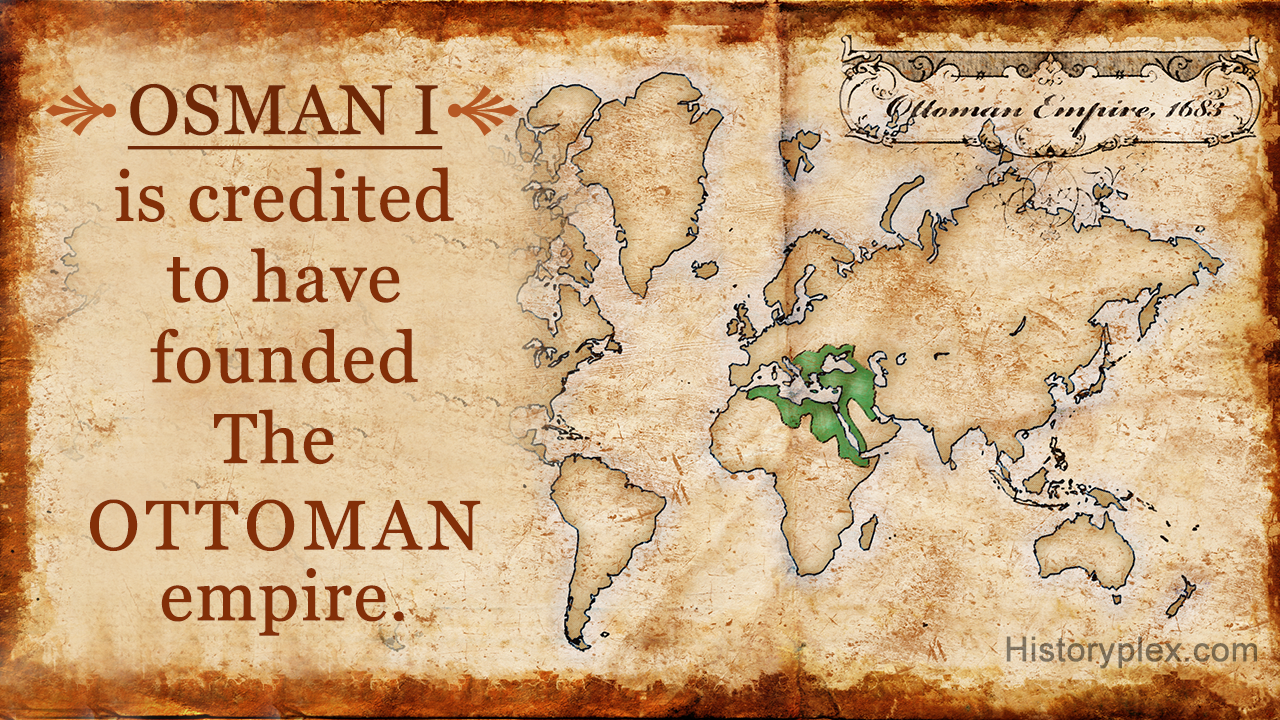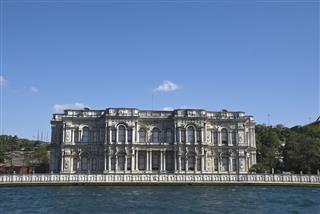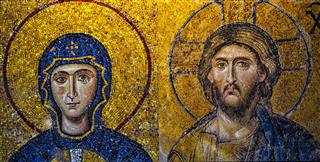
I presume there are very few people who have not heard of the mighty Ottoman Empire. The following article on its timeline would enable you to closely trail this colossus Turkish empire’s rise, conquests and fall.
History bears testimony to the fact that the higher you rise, the harder you fall. We can see numerous evidences of this fact in the chronicles of world history – The Achaemenid Empire, The French Colonial Empire, The British Empire, The Dutch Empire, etc. The Ottoman Empire is also in the league of these colossal empires that rose to great heights, with their individual reigns lasting for decades, sometimes centuries. However, as much as they reached the height of glory and power, their fall traced their journey to abysmal depths of notorious oblivion. Despite their fall their legacies, the only relics of their glorious past, remain among us in the form of historical accounts, architectural remains, cultural and linguistic influences. The Ottoman Empire timeline provided in this article will take you to a journey in the past and allow you to sneak a peak into the rise, achievements and fall of this great empire.
Ottoman Empire Facts
Before we proceed towards the timeline, let’s take a closer look at some basic facts pertaining to this mammoth empire.
What was the Ottoman Empire?
The Turkish Empire was a very powerful political and military entity of the Turks which was established in the Middle ages and which lasted well into the 20th century. It all began with a small state comprising just a handful of Turks who are believed to be successors of the Seljuk Turks, the latter having originally come from Asia Minor during the early part of the Middle Ages. The official Ottoman Empire is believed to have been established in July 1299 and it lasted till October 1923. It reached the peak of its power and glory in the sixteenth and the seventeenth centuries and during this period, the geographical area under the reign of the Ottoman scepter spanned across three continents and included a significant chunk of Southeastern Europe, North African and Western Asia. The empire was divided into twenty-nine provinces and a large number of vassal and tributary states. The Empire also extended its authority over many distant states and kingdoms via media declaring allegiance to the Ottoman head of the state – the Sultan and the Caliph. Constantinople, i.e. modern-day Istanbul, was the capital.
Who Founded the Ottoman Empire?
Although formed as a result of the disintegration of the Turkish Anatolia into independent states (the Ghazi emirates), the credit for founding the Great Turkish Empire has been bestowed upon Osman I. He led one of the Ghazi emirates and declared his small settlement of Turks independent from the reign of the Seljuk Turks in the year 1299. he declared Bursa as the capital of his small kingdom after extending the threshold of his small settlement closer to the edges of the Byzantine Empire. It is from Osman I that the Ottoman Empire derives its name.
Religion
Although the original Turkish settlement, the Sultans and the Caliphs all followed the Sunni Islam religion, with gradual expansion across various political and sociocultural regions, the subjects consisted of Christians, Jews and followers of various other minority religions. The Empire held a liberal attitude towards religious tolerance but such tolerance was not shown to followers of polytheistic religions.
Timeline: Rise, Growth and Fall
The following table encapsulates the chronological order of the rise, growth, stabilization and fall of the Turkish Empire. Check it out for a quick look at the chronicles of this ambitious and incredibly long-lasting saga of Turkish dominion.
| Rise Of The Ottoman Empire | |
|---|---|
| Year | Event |
| 1299 | Ottoman Empire Founded, Osman I’s reign begins. |
| 1389 | Battle of Kosovo resulting in the capture of a chunk of Serbia. |
| 1396 | Conquest of Bulgaria in the Battle of Nicopolis |
| 1444 | Crusade of Varna comes to an end on Ottoman victory of the Battle of Varna. |
| Subsequent Growth Of The Ottoman Empire | |
| Year | Event |
| 1453 | Constantinople captured by Mehmed II; Constantine (Christian emperor) dies during battle; Mehmed II claims the titles Caesar of Rome as the Roman Byzantine Empire finally yields to the Ottoman force. |
| 1460 | Morea conquered by Mehmed II |
| 1461 | Trabzon conquered by Mehmed II, putting an end to the Empire of Trebizond |
| 1463 | Conquest of Bosnia |
| 1473 | Mehmed II defeats Uzun Hassan of Akkoyunlu Turkmens in the Battle of Otlukbeli |
| 1475 | Caffa captured by Gedik Ahmet Pasha; Crimea declared vassal state of the Ottoman Empire. |
| 1478 | Conquest of Albania |
| 1480 | Otranto, the southeastern corner of Italy, is conquered by Gedik Ahmet Pasha as a strategic move to create a base for orchestrating further conquest of Italy. |
| 1481 | Death of Mehmed II and Bayezid II’s ascension to the Ottoman Throne. |
| 1498 | Conquest of Montenegro |
| 1514 | Ismail I of Safavid Persia defeated by Selim I, bringing East Anatolia under the Turkish rule in the Battle of Chaldiran. |
| 1516 | Al-Ashraf Quansuh al-Ghawri of Mamluk Sultanate (Egypt) defeated by Selim I in the Battle of Marj Dabiq, bringing Palestine and Syria under control of Ottoman Empire. |
| 1517 | Tuman bay II of Mamluk Sultanate (Egypt) defeated by Selim I in the Battle of Ridaniya; Selim I assumes the title of Caliph. |
| 1519 | Conquest of Algeria |
| 1520 | Beginning of the reign of Suleiman I, also known as Suleiman the Magnificent. |
| 1521 | Belgrade captured by Suleiman I |
| 1522 | Rhodes captured by Suleiman I |
| 1526 | Louis II of Hungary and Bohemia defeated by Suleiman I in the Battle of Mohacs |
| 1529 | Siege of Vienna |
| 1533 | Turks take over Iraq |
| 1538 | A big part of Mediterranean Sea brought under Turkish control in the Sea Battle of Preveza. |
| 1550 -c.1650s | Sultanate of Women, when women of the Imperial Harem exercised considerable political influence over the affairs of the State. |
| 1551 | Conquest of Libya |
| 1541 | Budapest captured by Suleiman I, followed by conquest of a significant portion of Hungary. |
| 1547 | Hungary divided between Suleiman I and Ferdinand I of Austria by agreement. |
| 1566 | Suleiman I’s reign comes to an end. |
| 1570 | Piyale Pasha conquers Cyprus. |
| 1574 | conquest of Tunisia |
| 1571 | Turks face defeat from the Spanish and the Venetians in the Battle of Lepanto. |
| 1578 | Conquest of Tbilisi and a good part of Georgia. |
| 1590 | Treaty of Istanbul |
| Intermediate Period | |
| Year | Event |
| 1610 | Jelali Revolts suppressed by Kuyucu Murat Pasha with great loss to Turkmens. |
| 1612 | Treaty of Nasuh Pasha |
| 1615 | Treaty of Serav |
| 1683 | Ottomans defeated in the Battle of Vienna |
| 1686 | Evacuation of Hungary |
| 1687 | Death of Mehmed IV |
| 1699 | Treaty of Karlowitz |
| 1718 | Treaty of Passarowitz |
| 1718 | Tulip Era begins |
| 1730 | Tulip Era ends with the revolt of Patrona Halil, resulting in the dethronement of Ahmet III. |
| 1739 | Treaty of Belgrade |
| 1774 | Treaty of Küçük Kaynarca |
| 1807 | Kabakçi rebellion resulting in dethronement of Selim III. |
| 1808 | Kabakçi rebellion suppressed by Alemdar Mustafa Pasha. Mahmut II succeeds Selim III as the new Sultan after the latter’s demise. |
| 1813 | Second Serbian Uprising |
| 1821 | Beginning of the Greek War of Independence |
| Gradual Decline Of The Ottoman Empire | |
| Year | Event |
| 1830 | Algeria gradually surrendered to French rule |
| 1832 | Greek sovereignty officially established as a result of the Greek War of Independence |
| 1831-1833 | Egyptian-Ottoman War |
| 1853 | Crimean War |
| 1862 | Establishment of a consolidated autonomous state of Romania. |
| 1876 | Beginning of the Constantinople Conference. |
| 1877 | Russo-Turkish War |
| 1878 | Serbian independence acknowledged by the Treaty of San Stefano during the Russo-Turkish War and an autonomous Bulgarian principality is established under very limited Ottoman power. Bosnia occupied by Austria-Hungary and Britain takes over Cyprus. |
| 1881 | Tunisia converted to a French colony. |
| 1882 | Egypt included under the British aegis. |
| 1885 | Bulgaria takes Eastern Rumelia under its jurisdiction. |
| 1908 | Second Constitutional Era, Bulgarian Independence, Annexation of Bosnia to Austria-Hungary. |
| 1912 | 340 year old presence of the Ottoman empire brought to an end by Italy defeating the Ottomans and taking over Libya. Albania declared independent in the First Balkan War. |
| 1913 | Save for Istanbul and a small surrounding area, the Ottoman Empire is completely erased from the political map of Europe. |
| 1914 | The Ottoman Empire joins the World War I and sides with the Central Powers. Britain annexes Cyprus. |
The Ottoman Empire, after WWI, was partitioned, creating the modern Arab World (Algeria, Bahrain, Comoros, Egypt, Djibouti, Iraq, Kuwait, Lebanon, Libya, Libya, Morocco, Oman, Qatar, Saudi Arabia, etc.) and the Republic of Turkey. That was a brief overview of the timeline of the Ottoman or the Great Turkish Empire, delineating some of the most significant events of Turkish and European history. The remnants of this majestic empire still remain as architectural relics and cultural influences in these regions – they remind us of the fact that splendor and glory never really die.






